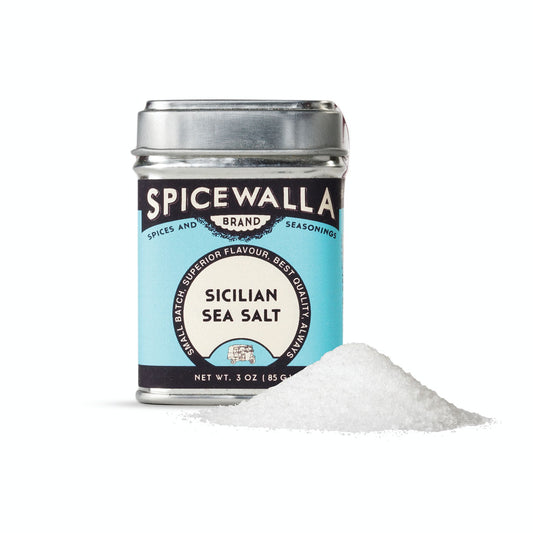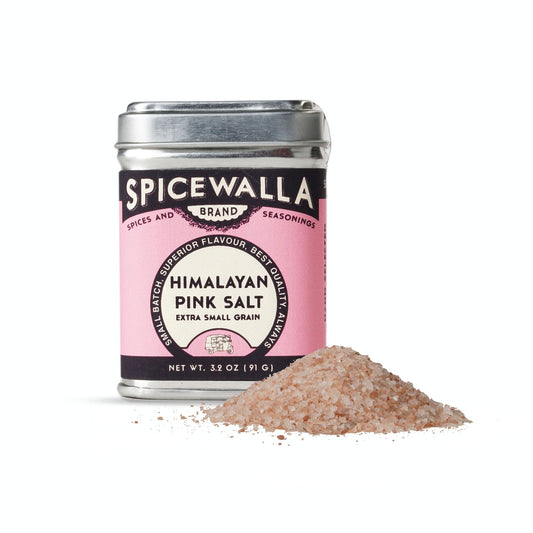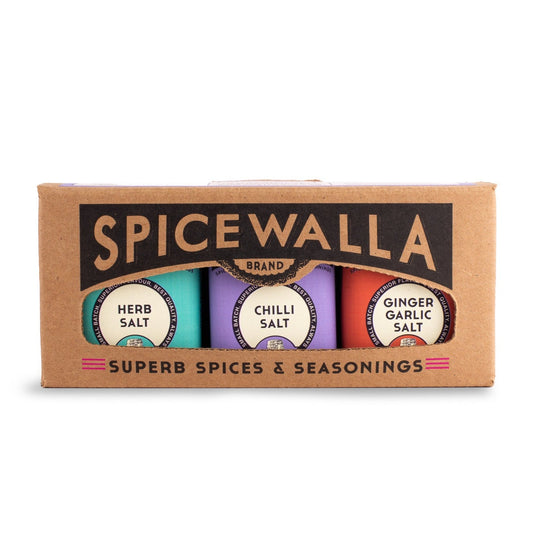If there’s one ingredient that unites every kitchen in the world, it’s salt.
Just a pinch can wake up sleepy flavours, balance sweetness, and add depth to dishes in ways no other seasoning can. But walk down the salt aisle and suddenly it’s not so simple—kosher, sea, Himalayan pink, table… what’s the difference, and does it really matter?
The truth is, yes! Different salts bring unique textures, flavours, and even cooking properties that can transform your cooking from good to chef-level.
Let’s break it down.
Most Popular Types of Salts
There are countless varieties of salt out there, but a few show up most often in everyday cooking. Each has its own texture, flavour, and best use. Some are workhorses, some are divas, and some just look really good on the table!
Here’s a quick guide to the four most common types you’ll see in kitchens and on store shelves.
Table Salt
Table salt is the classic OG, the one we all grew up with. It is finely ground and super processed, which means it’s stripped of minerals and often has added iodine which can impart a slightly metallic-y flavor.
The pros of table salt are that it dissolves easily and measures consistently, which is why some might prefer it for baking and general cooking. It’s not flashy, but it gets the job done.
Kosher Salt
Kosher salt is the chef and home cook favorite. It has a larger, flakier texture, making it easier to pinch, sprinkle, and evenly distribute, which is exactly why it’s a favorite in kitchens around the world.
Kosher salt got its name not because of religious reasons but because it was originally used in the process of koshering meat. Kosher salt usually doesn’t have additives like iodine, so it has a clean flavor that plays nicely with everything from roasted veggies to juicy steaks.
It’s versatile, approachable, and satisfying to work with.
Sea Salt
Sea salt is harvested straight from evaporated seawater that maintains trace minerals that give it a slightly more complex flavour. Depending on where it’s from, it might have a hint of brininess or a touch of earthiness.
Sea salt comes in a large variety of textures, from big delicate flakes to coarse chunks to fine, and it’s ideal as a finishing touch.
Sprinkle it on cookies, fresh tomatoes, or even chocolate. It’s a little bougie, a little rustic, and will make any food feel gourmet.
Himalayan Pink Salt
Himalayan pink salt is basically the showstopper of salts.
Mined from ancient sea beds in the Himalayan mountains, it gets its signature pink color from trace minerals like iron. It’s often marketed as the “healthier” salt, though in reality, it is mostly sodium chloride (just like all the others).
Himalayan pink salt has a mild, slightly earthy flavor. It can be used in cooking, baking and as a finishing salt to add some beauty and texture.
So, Which Salt Rules Them All?
Here’s the deal: no salt is better than the others and it all comes down to how and when you’re using it.
- For everyday cooking and baking, kosher salt is most often the best choice because it’s easy to handle, less salty by volume, and gives you a lot of control.
- If you want to add a little drama or texture to a dish, reach for flaky sea salt or Himalayan pink salt for a perfect finishing touch.
Just remember that not all salts are created equal when it comes to volume. A teaspoon of table salt packs way more punch than a teaspoon of kosher salt, so always taste as you go and season gradually.
Stay Salty, Spicewallas!
Salt isn’t just a seasoning—it’s a storyteller.
It connects cultures, preserves history, and enhances everything from simple scrambled eggs to decadent chocolate truffles. Once you understand the strengths of each type, you’ll start seasoning with intention, layering in flavour, texture, and a little bit of flair.
Congratulations, you are now ready to walk down that salt aisle with confidence, and remember…a well-seasoned dish is a happy dish 🌶️







